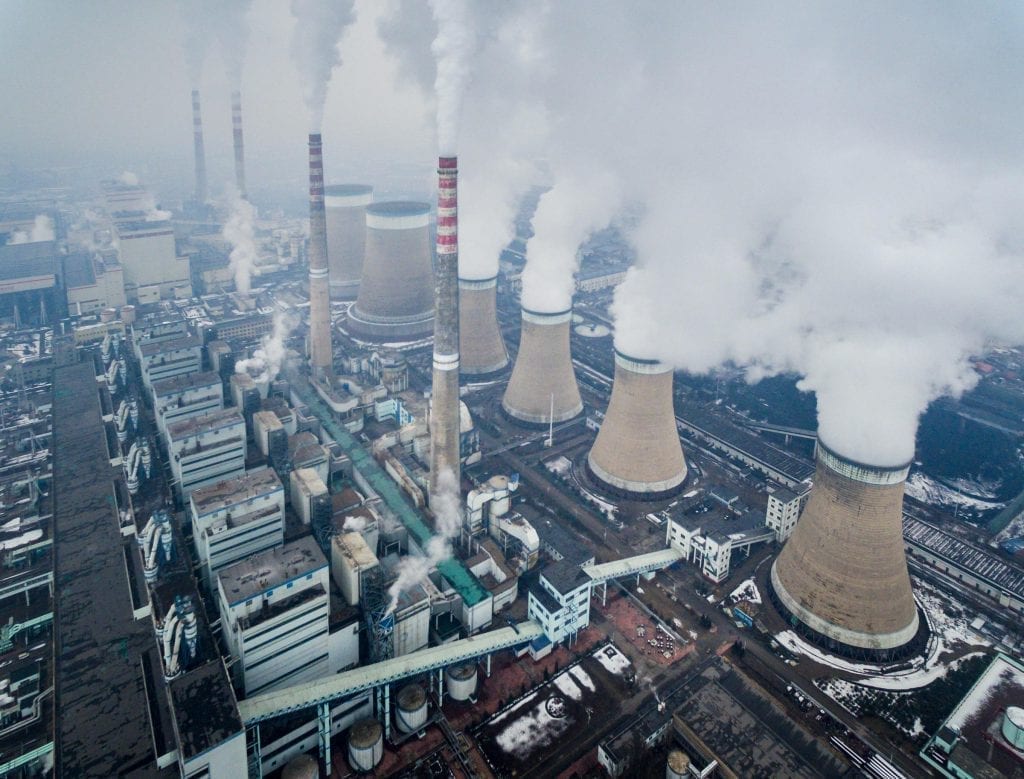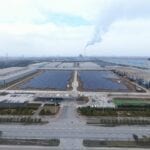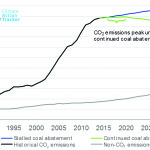Chinese President Xi Jinping said he wants his country to “achieve carbon neutrality before 2060.” It will not be an easy task for the world’s largest emitter of greenhouse gases (GHG).
China, though it has canceled some planned thermal power plants over the past several years, has as much as 200 GW of coal-fired facilities in its development pipeline, according to Mary Hutzler, a distinguished Senior Fellow at the Institute for Energy Research. Hutzler, who spent more than 25 years as an analyst and for a time acting administrator with the U.S. Energy Information Administration (EIA), has said coal will be critical to China’s economic recovery after the coronavirus pandemic.
Xi, speaking to the United Nations General Assembly on Sept. 22 as part of Climate Week NYC 2020 in New York City, called for a “green revolution,” saying the COVID-19 pandemic highlighted the need to preserve the Earth’s environment. Xi called on countries to “achieve a green recovery of the world economy in the post-Covid era.
“Humankind can no longer afford to ignore the repeated warnings of nature,” Xi said, as he cited the 2015 Paris climate accord and efforts his country is taking to meet the deal’s targets. He said his country would raise its emissions reduction goals with “vigorous policies and measures,” adding that “we aim to have CO2 [carbon dioxide] emissions peak before 2030 and achieve carbon neutrality before 2060.”
Achieving carbon neutrality means a business or country is releasing no additional CO2 into the atmosphere. It also can be achieved by capturing an amount of CO2 equal to the amount that is emitted, which could be a more-likely scenario for China.
Environmentalists were pleased with Xi’s comments, even as they acknowledged how difficult it could be to accomplish. Jennifer Morgan, executive director of Greenpeace, in a statement said, “China’s commitment to peak emissions before 2030 and [to] go carbon neutral before 2060 sends a strong signal that the reality of the climate crisis and the need for multilateral cooperation has not been lost but is central. In the face of fires, floods and droughts around the world, it is crucial that these ‘signals’ quickly turn into action.”
Li Yan, Greenpeace’s chief China representative, said, “This is a very positive signal during a challenging year for the environment and global cooperation. This year we have seen the devastating consequences of flooding across southern China, as well as typhoons and record-setting heat waves. Moving the peaking timetable earlier is a much-needed response to the climate emergency we’re facing. If China, long held up as the world’s biggest emitter, can commit to carbon neutrality, justifications for delaying climate action melt away.”
U.S. Has No Carbon Goal
U.S. officials have not commented on Xi’s plan, and the U.S. has no announced goal to reduce GHG emissions. The U.S. is the world’s No. 2 emitter of GHG, though its emissions are about half those of China, which released the equivalent of 10 billion tons of CO2 into the atmosphere in 2018, according to the Global Carbon Project, which tracks global emissions worldwide.
China emits about three times as much CO2 as the EU; several EU member states already have pledged to end coal-fired power generation, including Germany and Spain. The EU has pledged to become carbon-neutral by 2050.

U.S. President Donald Trump, who once described climate change as a hoax invented by China, has said he will pull the U.S. out of the Paris accord, although the earliest date that could happen is after this year’s presidential election. Democratic presidential nominee Joe Biden already has said he will recommit the U.S. to the Paris Agreement.
Biden, in an address on climate in July of this year, in which he announced a $2 trillion climate plan, said, “We’re going to reverse Trump’s rollbacks of 100 public health and environmental rules, and then forge a path to greater ambition. We’re going to get back into the Paris Agreement, and back into the business of leading the world.”
Andrew Wheeler, administrator of the U.S. Environmental Protection Agency (EPA), in July announced that the agency would limit greenhouse gas emissions from airplanes for the first time in U.S. history.
‘Significant Step Forward’
Patricia Espinosa, the U.N. top climate official, said Xi’s announcement is “A big shift for curbing emissions and a significant step forward in international cooperation.” Frans Timmermans, the leader of the U.N.’s executive efforts on climate change, said, “We need decisive action from every country to keep temperatures under control, tackle climate change and keep our planet inhabitable.”
China relies heavily on coal-fired power, even as the country is among the world leaders in renewable energy. China leads the world in production of solar panels and wind turbines, and also is the world’s leading manufacturer of electric cars and buses.
Michael Edesess, adjunct associate professor, Division of Environment and Sustainability at Hong Kong University of Science and Technology, told POWER on Thursday that China can reach its decarbonization goal, and do it while replacing coal-fired generation.
“It is certainly feasible in 40 years,” said Edesess, who also is managing partner / special advisor at M1K LLC. “It would mean huge expansions of nuclear power as well as wind and solar power and high-power transmission lines, and perhaps carbon capture and storage. China is working on building additional nuclear power plants, and many could be completed by 2060— enough to replace coal, in combination with the wind and solar power plants it is developing, which need more transmission lines for the electricity to be delivered to population centers. China is working on possible offshore locations for deep storage of carbon as well, but while nuclear power is a developed technology, large-scale carbon storage is speculative.”
Gavin Harper, a research fellow at the Birmingham Centre for Strategic Elements and Critical Materials at the University of Birmingham in the UK, told POWER on Thursday that China has an advantage in move toward decarbonization because of the “dominant position it occupies in the global market and supply chains for critical materials.”
“Rare earth magnets are essential to making efficient offshore wind turbines … and rare earths can also be employed in a range of generators and the most efficient motors used in most electric vehicles,” Harper said. “China has been able to leverage their position in materials supply to capture ever greater swathes of the supply chain for products containing rare earth magnets.”
China Power, which analyzes Chinese energy data based on information from the International Energy Agency and the U.S. Energy Information Administration, said coal accounted for 59% of China’s energy use in 2018. The group said that since 2011, China has consumed more coal than the rest of the world combined.
Global Energy Monitor late last year reported that China expanded its coal-fired generation capacity by almost 43 GW between January 2018 and June 2019. Coal-fired generation worldwide, not including China, fell by about 8 GW during that same period.
Research from a climate group said that if China were to become carbon-neutral by 2060, it could prevent 0.4 to 0.7 degrees Fahrenheit of additional global warming. John Sterman, a Massachusetts Institute of Technology management professor who models and tracks emission reductions with Climate Interactive, said the numbers are “very rough estimates,” telling Associated Press, “China’s by far the world’s big emitter. They’re emitting more than the EU and U.S. together. It puts a lot more pressure on the United States.”
The Carbon Neutrality Coalition reports that with China’s pledge, 30 countries now have some measure of carbon-neutral goals. Those 30 together account for about 43% of the world’s emissions of CO2. Countries that have made no carbon-neutral pledges, along with the U.S., include Russia, India, South Africa, and Australia, among others.
—Darrell Proctor is senior associate editor for POWER (@POWERmagazine).










